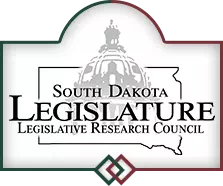|
State of South Dakota
|
|
SEVENTY-SEVENTH
SESSION
LEGISLATIVE ASSEMBLY, 2002 |
| 400H0350 |
SENATE EDUCATION COMMITTEE ENGROSSED
NO.
SB 41
-
01/17/2002
|
|
Introduced by:
The Committee on State Affairs at the request of the Investment Council
|
BE IT ENACTED BY THE LEGISLATURE OF THE STATE OF SOUTH DAKOTA:
Section 1. That § 13-63-11 be amended to read as follows:
13-63-11. Account owners may withdraw all or part of the balance from an account
Revenue Code and related regulations;
Section 2. That § 13-63-18 be amended to read as follows:
13-63-18. No contributor to, account owner of, or designated beneficiary of, any account may , directly or indirectly, direct the investment of any contributions to an account or the earnings from the account , except to the extent permitted under section 529 of the Internal Revenue Code and related regulations.
Section 3. That § 13-63-21 be amended to read as follows:
13-63-21. The council shall adopt policies, guidelines, procedures, or rules pursuant to chapter 1-26 to prevent contributions on behalf of a designated beneficiary in excess of
Section 4. That § 4-5-26 be amended to read as follows:
4-5-26. Money made available for investment may be invested in the following classes of
securities and investments and, except as provided by
§
3-12-117, chapter 3-13, the South
Dakota Cement Plant retirement fund,
chapter 13-63,
and the permanent trust fund containing
the net proceeds from the sale of state cement enterprises, not otherwise:
Section 5. That ARSD 6:01:06:01 be amended to read as follows:
6:01:06:01. Definitions. Words and phrases defined in SDCL chapter 13-63 have the same meaning when used in this chapter. Terms used in this chapter mean:
(1) "Cash," currency, bills, and coin in circulation, or converting a negotiable instrument to cash by endorsing and presenting to a financial institution for deposit. An automatic transfer,
cashier's check, certified check, money order, payroll deposit, traveler's check, personal check,
and wire transfer are cash;
(2) "Investment direction," specifying or attempting to specify the particular financial
instruments or ownership interests either individually, or within a fund family or other group of
financial instruments or ownership interests held as an investment group, into which the
contributions or earnings are invested. Investment direction does not mean selecting an initial
type of investment program if more than one program is offered;
(3) "IRC," section 529 of the Internal Revenue Code as amended on
August 1, 2001
January 16, 2002
;
(4) "Program manager," any financial institution selected by the council to act as the
depository and manager for the higher education savings plan.
Section
6.
That ARSD 6:01:06:04 be repealed.
6:01:06:04. Withdrawals -- Reporting of nonqualified withdrawals -- Penalties. An account
owner may withdraw funds from an account on 30 days notice. The designated beneficiary of
an account does not have any authority to withdraw funds from an account unless the account
is structured to give the designated beneficiary such right of withdrawal upon matriculation or
upon incurring qualified higher education expenses.
(1) Withdrawals. Types of withdrawals include:
(a) Qualified withdrawals. In order to make a qualified withdrawal, the account holder
or the account holder's designee must complete a certification, on a form provided by the
program manager, declaring that the funds will be used for the purposes set forth in subdivision
SDCL 13-63-1(13). The form shall include a statement advising the designated beneficiary and
account owner to report, in accordance with IRC, refunds received from a higher education
institution. In addition to the certification, a withdrawal is deemed qualified only if:
(ii) The distribution is made only by check payable jointly to the designated beneficiary and a higher education institution as designated by the account owner, or the higher education institution only, or except as expressly permitted by IRC;
(b) Withdrawal based on death, disability, or scholarship. A withdrawal may be made as a result of the designated beneficiary's death, disability, or scholarship, if written substantiation is provided. Written substantiation must be from a party other than the designated beneficiary or the account owner that can independently confirm the circumstances of the withdrawal. For a scholarship, the withdrawal may not exceed the amount of the scholarship;
(c) Nonqualified or unsubstantiated withdrawals. Any penalty that exceeds zero percent would be considered more than de minimis based on IRC, therefore the council has determined that no penalty will be imposed pursuant to SDCL 13-63-15; and
(2) Substantiation procedures. Before treating any withdrawal as qualified, the program manager shall confirm that substantiation is provided for the amount of a withdrawal that the account owner or designated beneficiary asserts is qualified, that the substantiation complies with IRC, and, in the case of a withdrawal to pay qualified higher education expenses, that the substantiated expenditures are of a nature and in amounts that can be treated as qualified higher education expenses. If the program manager determines that substantiation is inadequate, it shall notify the account owner and defer making any distribution with respect to an inadequately substantiated request until proper substantiation is provided or the account owner instructs the financial institution to make the requested distribution.
Section 7. Whereas, this Act is necessary for the support of the state government and its existing public institutions, an emergency is hereby declared to exist, and this Act shall be in full
force and effect from and after its passage and approval.
